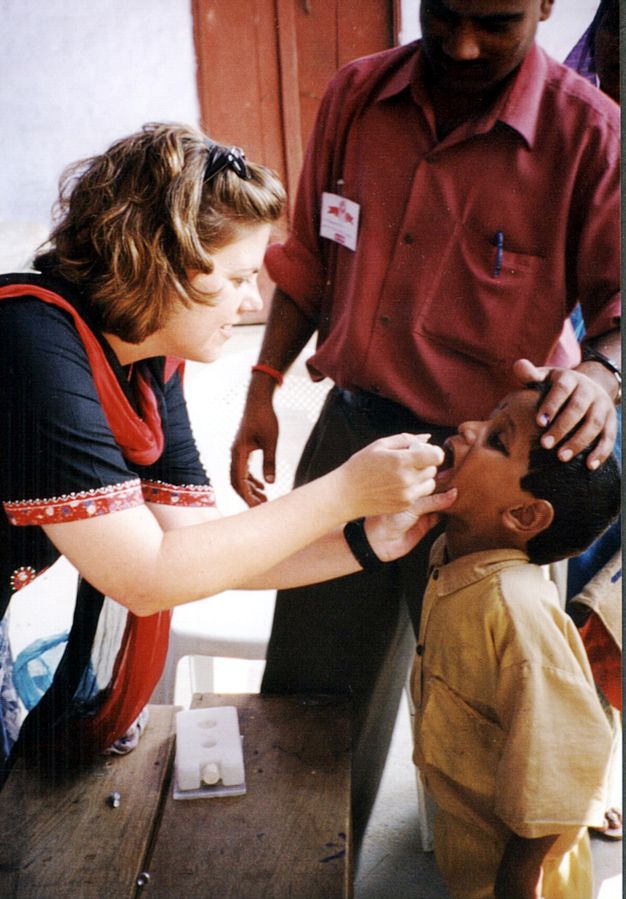Reality about Shortage of Polio Vaccines in India and its effect on Next Round Of Immunization

A special editorial by neucrad health (edited by S. Sarcar, PhD)
Polio or poliomyelitis is a highly contagious disease, caused by Poliovirus. The virus gets transmitted from one another mainly via faecal-oral route or by contaminated water or food. Polio virus multiplies in the intestine and can invade an affected person’s (mainly young children, under 5 years of age) brain and spinal cord, causing paralysis. According to CDC (Center for Disease Control), 1 out of 4 people with this form of infection develops flu-like symptoms which may include sore throat, fever, nausea, headache, stomach pain etc., which eventually go away. Whereas a smaller population may develop more serious symptoms like paraesthesia, meningitis and paralysis. According to WHO (World Health Organization), 1 in 200 infections lead to permanent disability or even death. World Health Organisation recommends mass campaigns like National Immunization Days (NIDs), when oral polio vaccine is administered to all children below five years towards complete eradication of the disease. Although, on 27th March, 2014 entire South-east Asia region, including India was declared polio–free by “WHO”, still every year, the “Ministry of Health and Family Welfare, India” conducts this vaccination programme twice a year to safeguard people since countries like Afghanistan, Nigeria and Pakistan failed to stop polio due to inability to implement strategic approaches [1].
If recent media reports are to be believed, India is facing an acute shortage of oral Polio Vaccine (OPV) and inactivated Polio Vaccine (IPV). It has lead to an indefinite postponing of the next polio immunization programme which was supposed to take place on February 3rd, 2019. The Ministry of Health and Family Welfare has briefed to all the states, except for Bihar, Madhya Pradesh and Kerala about the same, on 18th January about the situation. Only the states mentioned above have the requisite stock to carry on the immunization programme. The letter states, “due to unavoidable circumstances”, it has been decided to postpone the programme for the time being and the rescheduled date for the said activity will be communicated in the due course.
Several media houses including “Scroll.in” [2], “theprint.in” [3], “telegraphindia.com” [4], “fit.thequint.com” [5], either suggested that there was shortage of polio vaccines in India or, Indian government didn’t have enough fund (Rs.100 Cr+.) to buy the required amount of vaccines. You may read details by clicking links below.
On 24th January, the Ministry of Health and Family Welfare, India issued a press release [6] completely refuting the unsubstantiated news stories regarding shortage of polio vaccines in India. The Health Ministry in their press release denied the shortage of polio vaccines and further mentioned “as far as polio national immunization days (NID) is concerned, the required quantity of bivalent Oral Polio Vaccine (bOPV) has already been secured for the programme. However, to ensure availability of safe and quality vaccine to our children during NID, the testing of bOPV is made more stringent, and the same will be dispatched to states for public use after the clearance from national testing laboratory for each batch, and Polio NID will be held soon (sic)” [6].
The government official press release further mentioned, “Regarding Inactivated Polio Vaccine (IPV), there is neither shortage of IPV nor any shortage of funds for its procurement for Universal Immunization Programme (UIP) in the country…Confronted with steep hike in prices of IPV, India approached Gavi for partial support for further procurements, as India is also a Gavi eligible country and the same has been agreed to by Gavi Board”.
Reasons for Shortage of OPV
According to WHO, USA and other western countries switched to use IPV but there are few other nations, which still use OPV, because of unavailability of IPV and cost factor. Health ministry in India started using IPV since 2015 in few states (this year onwards, there is a plan to give it nationwide) with the help of vaccines supplied by “GAVI, the vaccine alliance”. In 2016, Government decided to switch from existing trivalent OPV (containing type, 1,2,3) to bivalent OPV (containing type 1 and 3, since type 2 has been eradicated all over the world).
In September 2018 Government cancelled the manufacturing licence of Bio-Med Pvt Ltd, one of the three manufacturers of OPV in India, after few batches of vaccines were found contaminated with Type-2 strain of Poliovirus (although attenuated type-2 containing vaccine was supposed to be destroyed by 2016, after this strain’s complete eradication from all over the world). Currently, Health ministry procures polio vaccines from only two authentic firms- Bharat Biotech and Panacea Biotech. However, demand for the vaccines are growing exponentially every year due to increase in population. Moreover, the Government now applies stringent protocols for the new batches of vaccine which requires more time for the production and testing of these vaccines.
Shortage of IPV
In 2016, to eliminate the risk of vaccine-derived polio cases during the “global-switch from tOPV to bOPV”, WHO recommended at least one dose of IPV (IPV protects against all 3-types of polio) along with OPV in immunization programmes throughout the world. Since IPV is being distributed by “GAVI” and IPV coverage in GAVI supported countries has more than trebled from 13% in 2015 to 43% in 2017, production of enough IPV vaccine is becoming slower than the required rate. Although according to the reports by “GAVI”, this global shortage of IPV supply should end by 2020 [7].
India as a nation with second largest population in the world, has its own issues where the government deals with them strategically. But as citizens, we should be more careful about unsubstantiated news specially in the field of health. It may spread fear among the general population. Neucrad is committed to bringing scientific news containing proper background information.
References: theprint.in, timesofindia.indiatimes.com, healthline.com
- https://www.who.int/en/news-room/fact-sheets/detail/poliomyelitis
- https://scroll.in/pulse/910881/polio-vaccine-shortages-pose-a-great-risk-to-children-even-if-india-is-polio-free
- https://theprint.in/governance/india-doesnt-have-polio-vaccine-for-the-next-round-of-immunisation/182419/
- https://www.telegraphindia.com/health/govt-seeks-rs-100cr-funding-for-polio-vaccine-cost-hike-after-spending-rs-3000cr-on-showpiece-statue/cid/1675433
- https://fit.thequint.com/health-news/govt-seeks-rs-100-cr-aid-for-polio-vaccine
- http://pib.nic.in/newsite/PrintRelease.aspx?relid=187739
- https://www.gavi.org/support/nvs/inactivated-polio-vaccine/
Image: This image is simply for iluustration purpose. Credit goes to
Centers for Disease Control and Prevention, public domain









